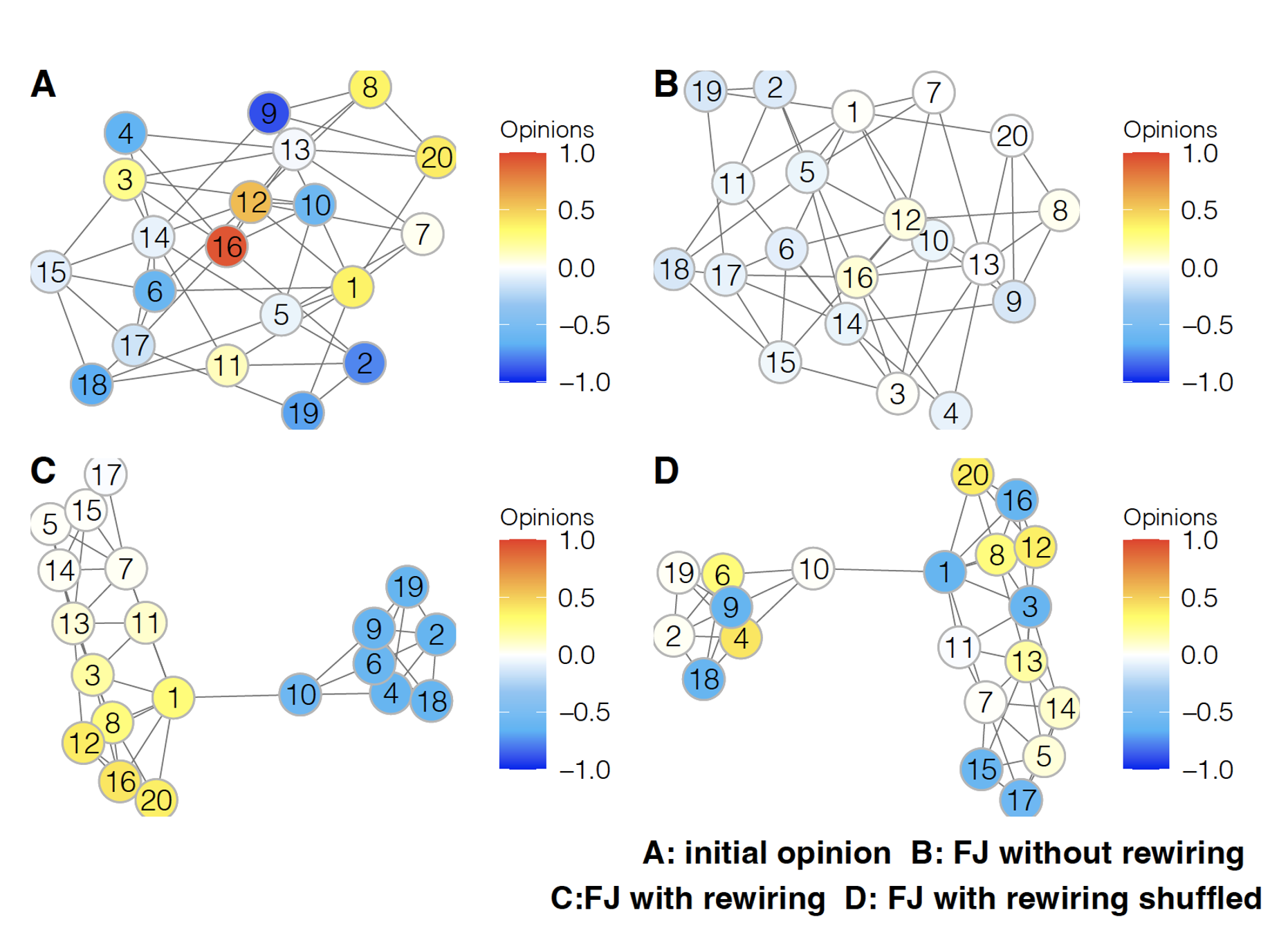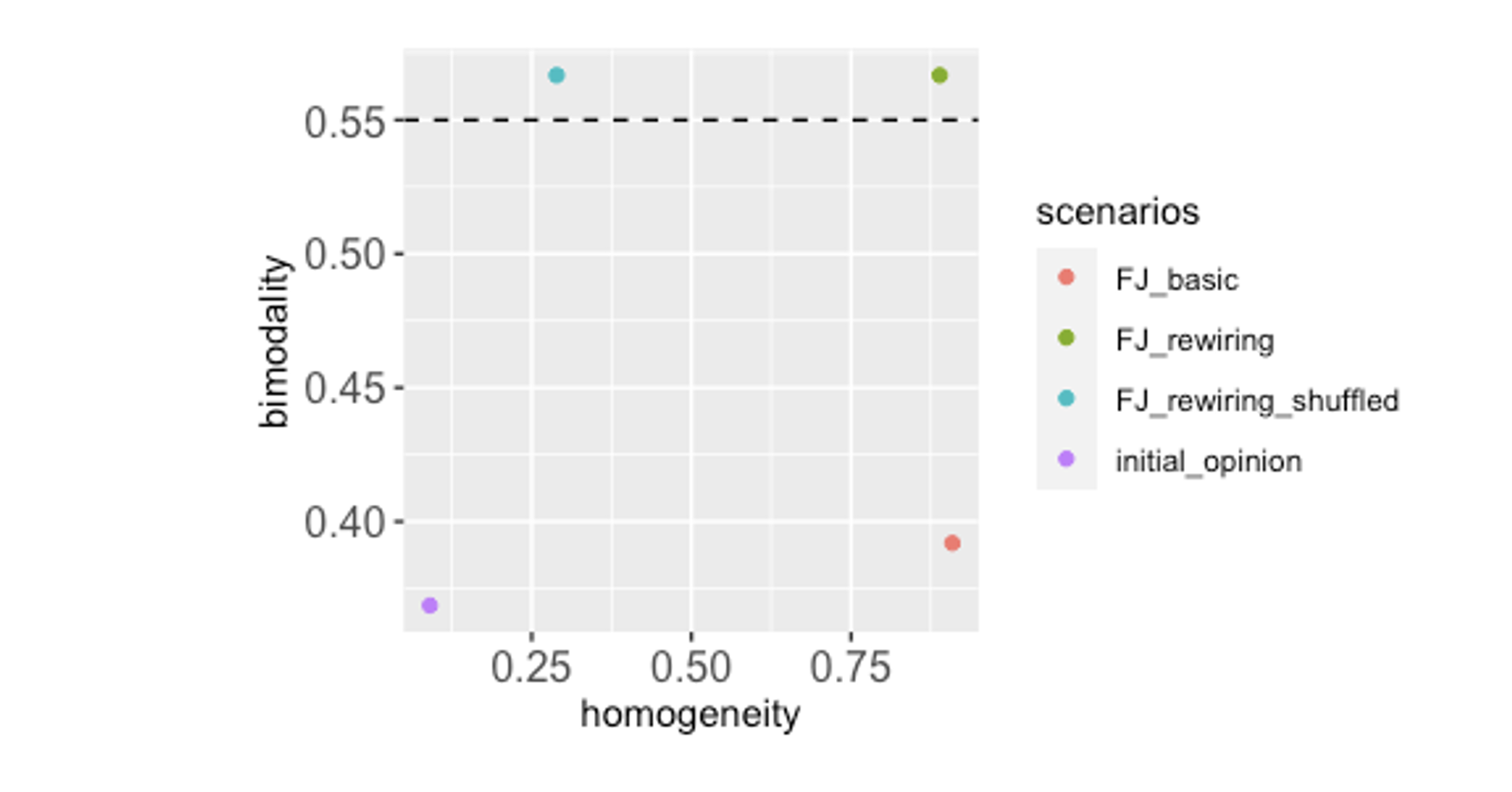Analysis of opinion dynamics over a realistic dynamic social network – report of a successful TNA experience
I took the opportunity of the SoBigData++ Transnational Access to develop a collaboration with the CEU research unit directed by János Kertész in Vienna (Austria) on the program titled “Analysis of opinion dynamics over a realistic dynamic social network”. I was hosted for three weeks in the Department of Network and Data Science and worked closely with the unit. We ended up with very interesting results that we plan to summarize in a conference paper shortly.
This opportunity has been of great importance because it enriched me with a different approach to analyzing the polarization of the opinion dynamics models, adding a new dimension of complexity to my previous knowledge. Also, it allowed me to be part of a different research context and thus to have many new stimuli for my future research.
The program's objective was to develop a realistic opinion dynamics model over a dynamic social network and investigate its impact in terms of polarization. More precisely, we used the Friedkin-Johnsen (FJ) opinion dynamic model, one of the most popular, validated in real social groups. The project aimed to extend the FJ model, which works on static networks, to include a rewiring scheme, also known as partner-switching, in which a node replaces one of its neighbors with another if some conditions hold. In fact, it has been proved that this is not realistic in general, because, depending on the strength of the tie or the importance of the issue, opinions do impact the social network itself. This is even more understandable if we consider the current Ukrainian crisis, where entire families are broken down, split into those who stay for Ukraine and those who stay for Russia. Furthermore, we wanted to analyze how the network's dynamicity impacts the model's polarization properties.
We developed a rewiring policy for the FJ model with opinions in [-1,1]: depending on the probability of rewiring prew that simply tells at what timestamps the rewiring process is applied, an edge whose endpoints disagree (i.e., with opinions that satisfy |x_i-x_j |> θ, where θ is a threshold parameter) is cut and replaced it with one that connects nodes that agree.
To measure the polarizing effect, we designed a polarization metric, which “calls” highly polarized a network for which there are two different opinions clusterized into two highly connected communities. It is composed of two dimensions: the bimodality (measured in terms of the bimodality coefficient) of the opinion distribution simply verifies that the opinions are divided into two clusters. The homogeneity, which we defined as the local linear agreement averaged over the network, tests that the two opinion clusters correspond to two clusters in the network topology.
We tested the model with simulations over networks of 20 nodes of different types. Figures 1 and 2 show a set of results for the dynamic FJ model applied with parameters set as prew = 0.9 and θ=0.1 in an Erdosh Reny graph. In Fig. 1, we see how the rewiring process changes the network structure and divides it into two separate clusters. Fig. 2 shows its impact on polarization: homogeneity remains equal to the FJ without rewiring, but the bimodality value greatly increases. This means that, while the FJ without rewiring does not exhibit polarization (because the bimodality is low), the FJ with rewiring reproduces it, and thus it is a realistic opinion dynamics model.

Figure 1: Network configurations and opinions arrangement for FJ with and without rewiring with parameters prew = 0.9 and θ=0.1 at the beginning (A), at the end of the FJ without rewiring (B), at the end of the FJ with rewiring (C) and at the end of the FJ with rewiring and reshuffling opinions over the network (D).

Figure 2: Polarization values for FJ with and without rewiring with parameters prew = 0.9 and θ=0.1 for each scenario considered.
In conclusion, in this extraordinary experience, we have designed a dynamic version of the FJ. We have designed a new definition of polarization that considers both the distribution of opinions and the network topology. We have tested the impact of the model with simulations over two types of networks, and we have seen that the rewiring process has significant effects on polarization.

